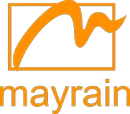 rainwears@163.com may@may-rain.com
rainwears@163.com may@may-rain.com Mon to Friday: 8.00 am - 7.00 pm
Mon to Friday: 8.00 am - 7.00 pm
Rain Free TPU Fashion Raincoat Camouflage | Waterproof & Eco
Field-Tested Notes on the Rain Free TPU Fashion Raincoat Camouflage
I spent the last month poking around factories and showrooms in North China, and—honestly—TPU rainwear is having a moment. Fashion buyers want quiet, odor-free shells; workwear distributors want durability without PVC baggage. In that context, the Rain Free TPU Fashion Raincoat Camouflage sits right in the sweet spot: clean lines, soft hand feel, and that streetwear camo look buyers keep asking for.

What’s trending (and why TPU matters)
Globally, TPU has edged ahead of PVC for mid-range rainwear: less plasticizer smell, better cold-crack performance, and solid clarity for semi-transparent styles. Camouflage overlays—especially in muted greens—are selling into music festivals, last‑mile delivery uniforms, and urban retail capsules. To be honest, the switch is driven as much by retail experience (no “vinyl smell”) as by compliance checklists.

Key specifications
| Shell material | Thermoplastic Polyurethane (TPU), matte camo print, ≈0.25–0.30 mm |
| Waterproof rating | Hydrostatic head ≥ 10,000 mm H₂O (ISO 811 / GB/T 4744) |
| Breathability (MVTR) | ≈ 5,000–8,000 g/m²/24h (JIS L 1099 B1; real-world use may vary) |
| Seams | Heat-sealed seam tape; HF welding on stress points |
| Cold crack | ≤ −20°C without embrittlement (internal vendor test) |
| Sizes | Unisex S–XXL; custom grading available |
Process, testing, and service life
Materials: TPU film with camo print, matte surface; snap hardware; TPU-compatible seam tape. Methods: laser or die cutting, HF welding, automated tape sealing, and 100% seam inspection. Typical tests: ISO 811 or GB/T 4744 (hydrostatic), AATCC 127 and 42 (spray/penetration), GB/T 12704 or JIS L 1099 (moisture vapor), EN 343 (protective clothing—rain). With normal use, service life is around 3–5 years; UV-heavy climates may shorten that—store away from heat.

Where it shines
- City commuting and bike share—quiet fabric, no crinkle.
- Festivals and retail capsules—camo reads “fashion,” not “worksite.”
- Field teams and delivery riders—reliable sealing, easy wipe-clean.
- Travel—packs flat; surprisingly odorless out of the bag, many customers say.
Customization options
Brand prints (screen or digital), alternate camo palettes, reflective piping, logo snaps, and hangtag sets. Typical MOQ starts ≈ 500–1,000 pcs per color. Standard lead time: 25–35 days after PP sample sign-off.
Vendor landscape (quick take)
| Vendor/Option | Waterproof | Breathability | Eco profile | Typical MOQ | Notes |
|---|---|---|---|---|---|
| Mayrain TPU camo | ≥10,000 mm | ≈5–8K g/m²/24h | PVC‑free; REACH mindful | ≈500–1,000 | Good value + fashion angle |
| Generic PVC raincoat | 8–12K mm | Low | Plasticizer concerns | Low | Budget, heavier, odor |
| ePTFE-laminate jacket | 20K+ mm | 15–25K g/m²/24h | Premium | Small (but pricey) | Top performance, higher cost |

Real-world feedback and mini case notes
A Rotterdam retailer told me returns dropped when they switched from PVC to this TPU style—“customers don’t complain about smell, and they keep it after festivals.” A Shenzhen courier fleet reported fewer seam issues after moving to taped TPU shells, especially during typhoon weeks. Meanwhile, a Berlin boutique liked the matte camo: “reads premium on the rack.”
Compliance and credibility
Factory location: Rm.1816 No. 44 Jianshe North Street, Shijiazhuang, China. Typical compliance targets include EN 343 (rainwear), ISO 811/GB/T 4744 (waterproof), JIS L 1099/GB/T 12704 (breathability), and REACH/California Prop 65 screening. Ask for current test reports per lot; results can vary with thickness and print inks.

Bottom line
If you need a fashion-forward, PVC‑free raincoat with dependable sealing, the Rain Free TPU Fashion Raincoat Camouflage is a practical, good-looking pick. Not the lightest alpine shell—sure—but for retail, events, and urban fleets, it hits the brief.
Authoritative references
- ISO 811: Textile fabrics—Determination of resistance to water penetration (hydrostatic pressure).
- GB/T 4744: Textiles—Testing and evaluation for water resistance—Hydrostatic pressure method.
- AATCC 127 & 42: Water resistance: Hydrostatic pressure and Spray test.
- JIS L 1099: Testing method for water vapor permeability of textiles.
- EN 343: Protective clothing—Protection against rain.
- REACH Regulation (EC) No 1907/2006 and OEKO‑TEX Standard 100 (component-level testing frameworks).
-
Stylish & Durable Lined Rain Coat Womens for Every Season | MayRainCoat
NewsNov.23,2025
-
Discover the Versatile and Sustainable Lilac Raincoat – Style Meets Innovation
NewsNov.23,2025
-
Lightweight Waterproof Coat: Durable, Comfortable, and Eco-Friendly Protection Worldwide
NewsNov.22,2025
-
Lightweight Raincoat – Ultimate Guide to Durable, Packable Rain Protection
NewsNov.21,2025
-
Lightweight Rain Poncho – Durable, Portable Weather Protection for Every Need
NewsNov.20,2025
-
Lightweight Poncho Rain: Durable, Portable Rain Protection for Any Situation
NewsNov.20,2025































